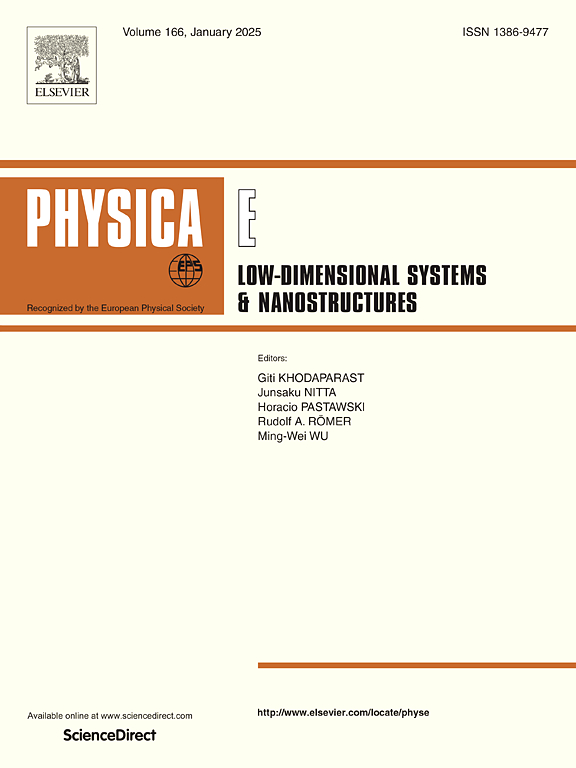Investigating transition metal (Fe, Co, Ni)-doped biphenylene network as a sensor for SF6 decomposition molecules detection at the atomic scale
IF 2.9
3区 物理与天体物理
Q3 NANOSCIENCE & NANOTECHNOLOGY
Physica E-low-dimensional Systems & Nanostructures
Pub Date : 2025-01-09
DOI:10.1016/j.physe.2025.116178
引用次数: 0
Abstract
For the detection of SF6 decomposition products, the development of high performance sensor materials is extremely critical. Biphenylene network (BPN), an emerging 2D carbon material, shows great potential in gas sensing. However, pristine BPN has limited performance in detecting SF6 decomposition products, and doping strategies are required to optimize its sensing performance. The adsorption mechanism and gas-sensitive properties of three transition metal-doped biphenylene network (TM-BPN) on SF6 decomposition products (SO2 and H2S) are investigated using first-principle calculations. After identifying the most stable doping sites, the correlation adsorption calculations show a significant charge transfer between TM-BPN and SO2, accompanied by the formation of covalent bonds. Among them, the adsorption energy of Fe-BPN on SO2 is −1.308 eV, which shows strong chemisorption. At the optimum operating temperature, the Fe-BPN system has a fast recovery time of 15.5 s, a high change of the work function of about 1 eV, and a strong resistivity change. So this gas-sensitive material is well suited for detecting SO2 molecules. The computational results in this paper provide theoretical guidance for advancing the development of BPN as a high-sensitivity gas sensor for electrical insulation equipment.

求助全文
约1分钟内获得全文
求助全文
来源期刊
CiteScore
7.30
自引率
6.10%
发文量
356
审稿时长
65 days
期刊介绍:
Physica E: Low-dimensional systems and nanostructures contains papers and invited review articles on the fundamental and applied aspects of physics in low-dimensional electron systems, in semiconductor heterostructures, oxide interfaces, quantum wells and superlattices, quantum wires and dots, novel quantum states of matter such as topological insulators, and Weyl semimetals.
Both theoretical and experimental contributions are invited. Topics suitable for publication in this journal include spin related phenomena, optical and transport properties, many-body effects, integer and fractional quantum Hall effects, quantum spin Hall effect, single electron effects and devices, Majorana fermions, and other novel phenomena.
Keywords:
• topological insulators/superconductors, majorana fermions, Wyel semimetals;
• quantum and neuromorphic computing/quantum information physics and devices based on low dimensional systems;
• layered superconductivity, low dimensional systems with superconducting proximity effect;
• 2D materials such as transition metal dichalcogenides;
• oxide heterostructures including ZnO, SrTiO3 etc;
• carbon nanostructures (graphene, carbon nanotubes, diamond NV center, etc.)
• quantum wells and superlattices;
• quantum Hall effect, quantum spin Hall effect, quantum anomalous Hall effect;
• optical- and phonons-related phenomena;
• magnetic-semiconductor structures;
• charge/spin-, magnon-, skyrmion-, Cooper pair- and majorana fermion- transport and tunneling;
• ultra-fast nonlinear optical phenomena;
• novel devices and applications (such as high performance sensor, solar cell, etc);
• novel growth and fabrication techniques for nanostructures

 求助内容:
求助内容: 应助结果提醒方式:
应助结果提醒方式:


